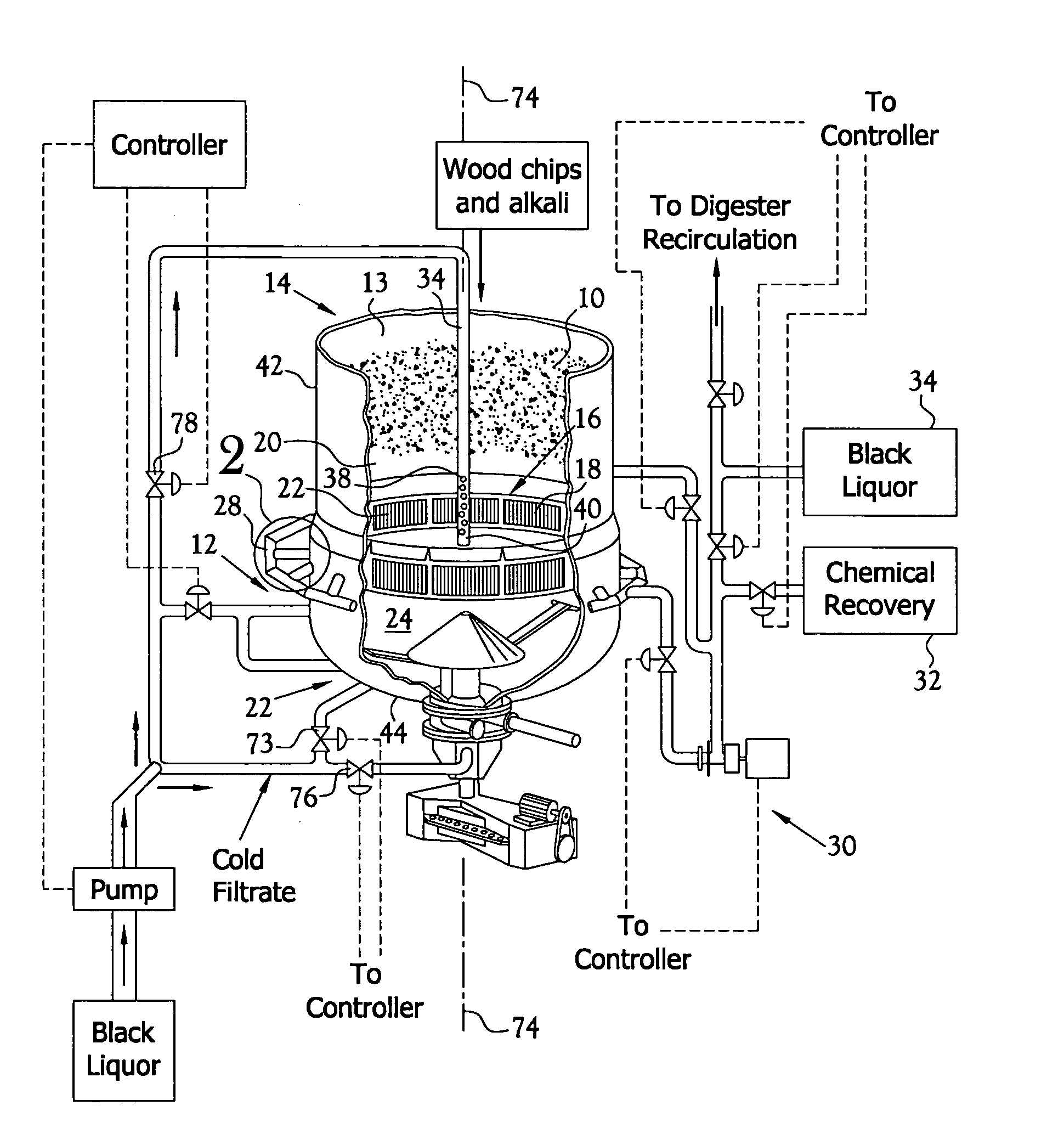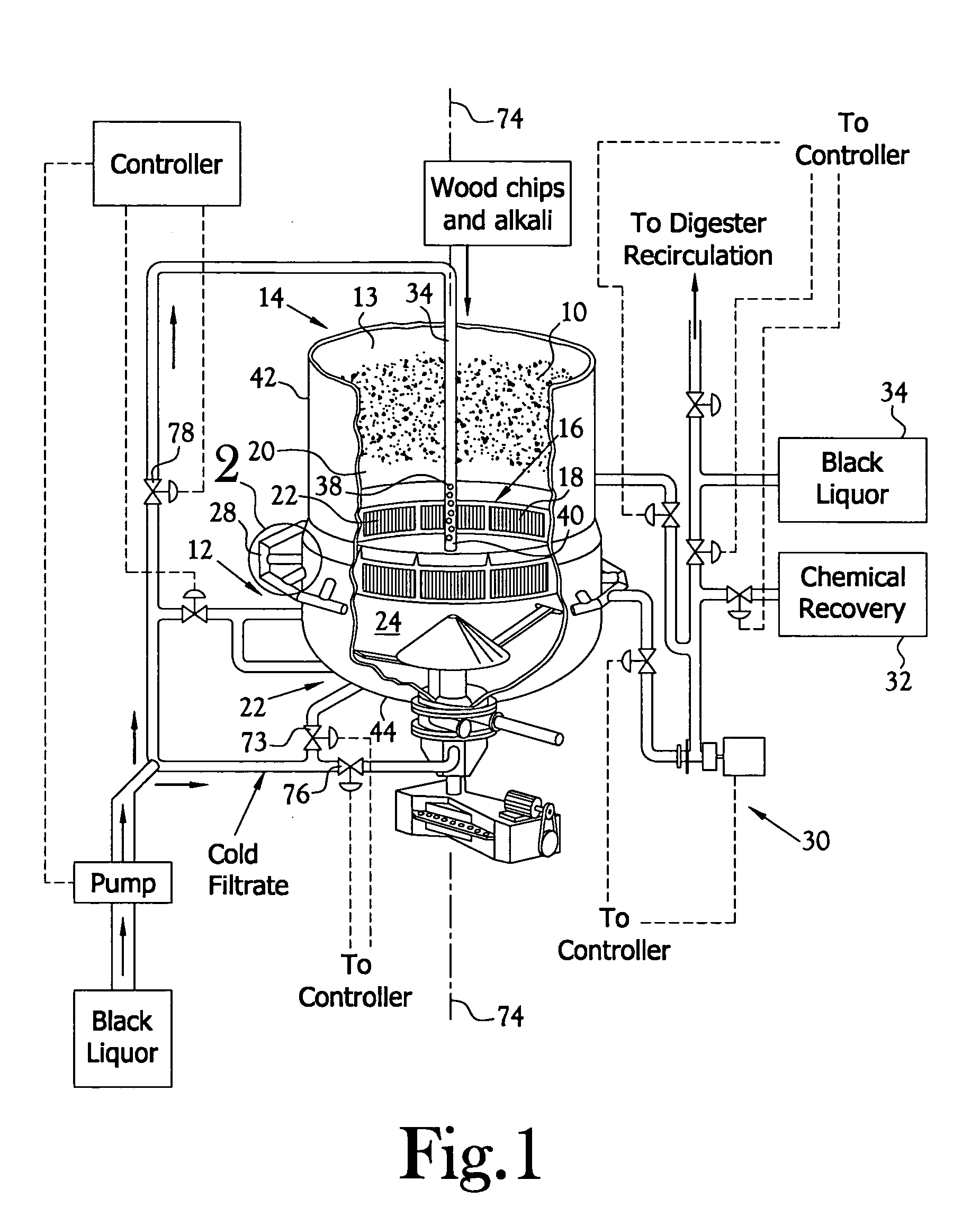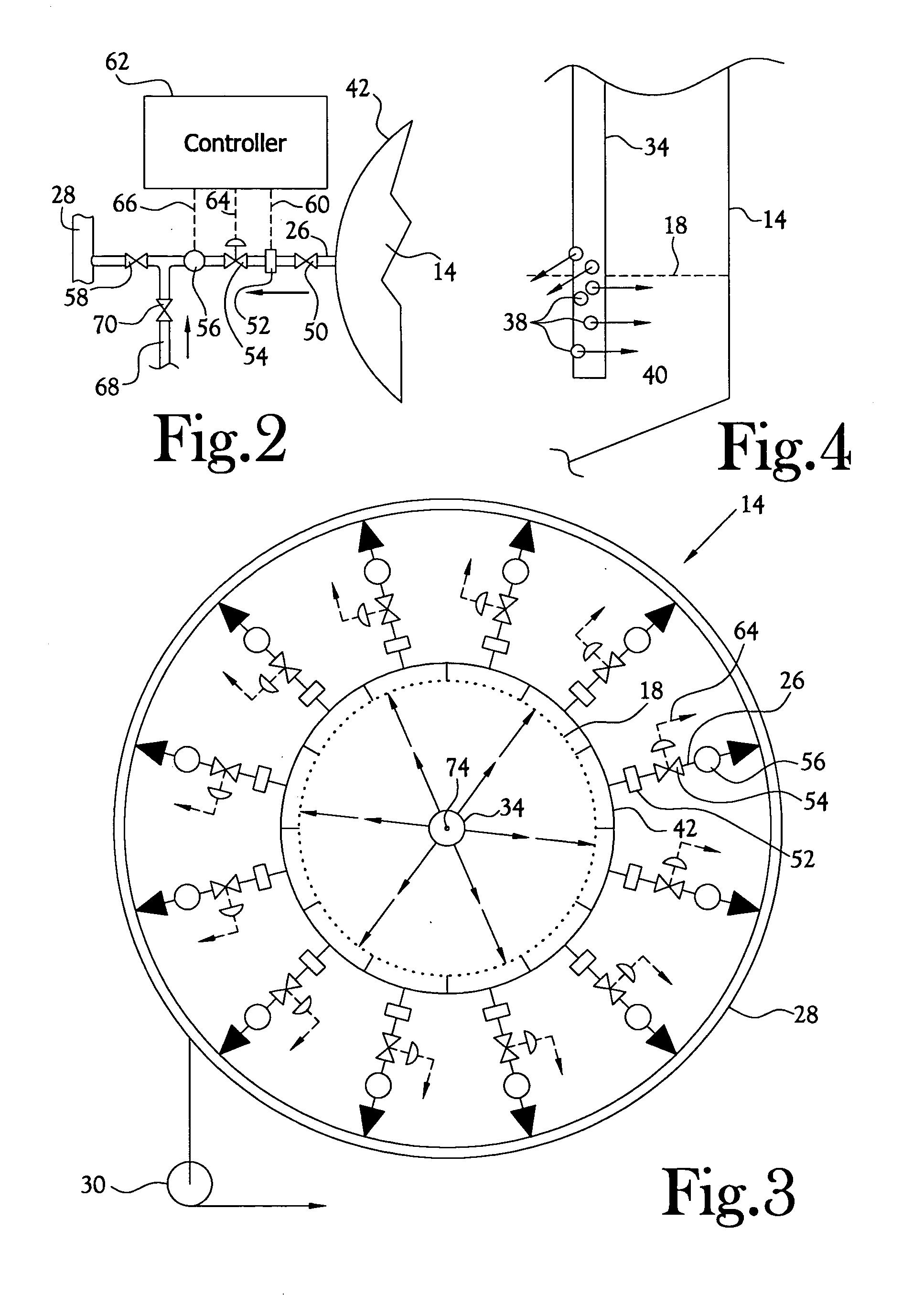Digester wash extraction by individual screen flow control
a technology of individual screen and wash, which is applied in the direction of continuous pulping process, finely divided material pretreatment, papermaking, etc., can solve the problems of difficult to predict and/or control the uniform flow of recirculation flow or free liquor, non-uniform cooking, and non-uniform retention of lignin on individual fibers, so as to avoid total plugging of the screen, maximize energy efficiency, and wash efficiency and chip mass
- Summary
- Abstract
- Description
- Claims
- Application Information
AI Technical Summary
Benefits of technology
Problems solved by technology
Method used
Image
Examples
Embodiment Construction
[0021] In the embodiment of the present invention depicted in FIGS. 1 and 2, as noted hereinabove, approximately 50% of the organic chip mass 10 is dissolved in the cooking liquor. The depicted digester 14 includes an upper zone 13 into which the chip mass is loaded. This is an extension of the cooking zone. A set 16 of screens, twelve screens 18 in a typical embodiment, are disposed about the inner circumferential wall 20 of the digester at a location just below the cooking zone 13 and above a wash zone 24 which is disposed at the bottom end of the digester.
[0022] Liquor containing dissolved solids is extracted from the interior of the digester through the screens. The liquor extracted through the individual screens is conveyed to a discharge header 28 which encircles the girth of the digester externally of the digester in the region of the screens and is conveyed, as by a pump system 30, to a chemical recovery station 32 or is selectively returned in part to the digester via a do...
PUM
| Property | Measurement | Unit |
|---|---|---|
| diameter | aaaaa | aaaaa |
| diameter | aaaaa | aaaaa |
| height | aaaaa | aaaaa |
Abstract
Description
Claims
Application Information
 Login to View More
Login to View More - R&D
- Intellectual Property
- Life Sciences
- Materials
- Tech Scout
- Unparalleled Data Quality
- Higher Quality Content
- 60% Fewer Hallucinations
Browse by: Latest US Patents, China's latest patents, Technical Efficacy Thesaurus, Application Domain, Technology Topic, Popular Technical Reports.
© 2025 PatSnap. All rights reserved.Legal|Privacy policy|Modern Slavery Act Transparency Statement|Sitemap|About US| Contact US: help@patsnap.com



